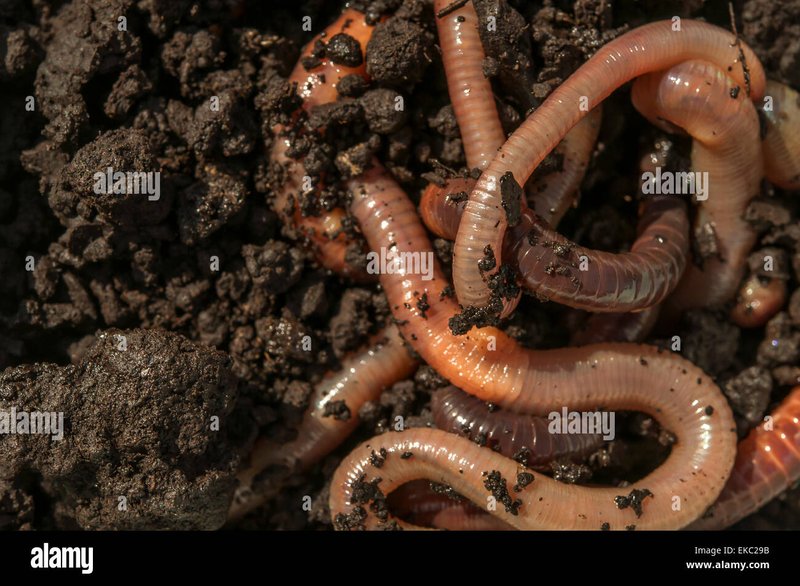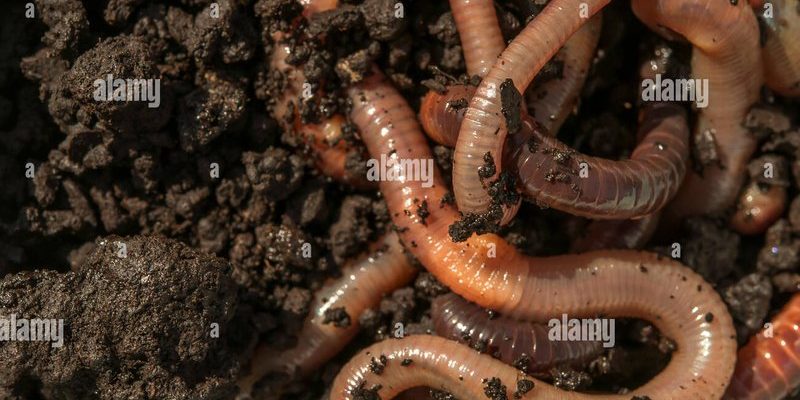
Let’s dig into this topic (pun intended!). By exploring the unique characteristics of sandy and clay soils, as well as how they affect earthworm populations, we’ll gain a better understanding of these fascinating creatures. Honestly, the more we know about their habitats, the better we can care for them, whether you’re gardening or just curious about nature.
Understanding Earthworms: Nature’s Soil Engineers
Earthworms are often called “nature’s recyclers” or “soil engineers” because they break down organic matter and aerate the soil. They play a crucial role in the ecosystem by helping to decompose leaves, grass, and other organic materials, turning them into nutrient-rich compost. This process improves soil structure, making it healthier for plants.
Now, you might be asking yourself: what do they need to survive? Earthworms thrive in environments that keep them moist and provide ample food sources. They prefer darker, loamy soils—think of them like a cozy home with all the essentials. They need oxygen, water, and organic material to munch on, so their living conditions play a significant role in their health and productivity.
Can Earthworms Live in Sandy Soil?
Sandy soil is characterized by its coarse texture and quick drainage. While it might not hold nutrients or moisture as well as loamy soil, earthworms can still make a home in sandy environments. In fact, certain species are quite adaptable!
Here’s the thing: sandy soil drains water quickly, which can be tough for earthworms, as they need moisture to survive. If they dry out, they can become inactive or even die. So, earthworms in sandy soil often rely on regular rainfall or irrigation to keep their environment damp.
Also, sandy soil tends to have less organic material compared to loamy soil. This means earthworms might have to travel further or work harder to find food. But if the sandy soil is enriched with organic matter—like compost or mulch—earthworms can thrive, turning the sandy terrain into a healthier space.
Can Earthworms Live in Clay Soil?
Clay soil has a completely different structure—it’s dense, sticky, and can hold water really well. While this might sound like a cozy environment, it’s not always ideal for earthworms. The heavy texture can make it challenging for them to move around, which is why you won’t find as many earthworms in clay soil compared to other types.
However, that doesn’t mean earthworms can’t live there. They can adapt to clay soil, but they prefer areas where the soil is more aerated and less compacted. Compacted clay can suffocate them, limiting their movement and access to food.
Interestingly, earthworms can help improve clay soil! As they burrow through, they create channels that allow air and water to penetrate more easily, which can alleviate some of the compaction issues. So, if you have clay soil, adding organic matter can support them and, in turn, enhance the overall health of your garden or landscape.
The Best Soil Conditions for Earthworm Health
Whether in sandy or clay soil, there are a few key factors that can help earthworms thrive:
- Moisture: Earthworms need a consistently moist environment but not overly wet. Too much water can drown them, while too little can cause dehydration.
- Organic Matter: Earthworms love organic materials. Compost, leaf litter, and decaying plant matter provide food and improve soil quality.
- pH Levels: Earthworms prefer slightly acidic to neutral soil (around pH 6-7). If the soil is too acidic or alkaline, it may affect their health.
- Temperature: Ideal temperatures for earthworms are typically between 50°F to 80°F (10°C to 27°C). Extreme temperatures can be harmful.
By knowing these conditions, gardeners and nature enthusiasts can create better habitats for earthworms, whether in sandy, clay, or loamy soils.
Comparing Sandy and Clay Soils for Earthworm Habitats
Let’s break it down:
Sandy Soil
– **Pros:** Drains well, allowing for good aeration; can host some earthworm species that adapt.
– **Cons:** Can dry out quickly, often lacks nutrients unless enriched with organic matter.
Clay Soil
– **Pros:** Holds moisture well, which can be beneficial if not too compacted; can improve with earthworm activity.
– **Cons:** Dense and heavy, making movement difficult for worms; may not provide enough food unless organic materials are added.
Understanding these pros and cons helps gardeners tailor their approach to either soil type, promoting a thriving earthworm population that enhances soil health.
Creating a Welcoming Environment for Earthworms
If you’re looking to support earthworms, consider these tips:
- Add Organic Matter: Regularly add compost or mulch to improve soil structure and provide food.
- Aerate the Soil: For clay soils, consider tilling or using garden forks to break up compacted areas.
- Maintain Moisture: Water your soil regularly, especially in sandy areas that dry out quickly.
- Avoid Chemicals: Pesticides and herbicides can harm earthworms. Opt for natural pest control methods whenever possible.
By following these practices, you can create a thriving habitat for earthworms, which in turn enhances the overall health of your garden.
So, can earthworms live in sandy or clay soil? The answer is yes, but they may face some unique challenges in each type. Both sandy and clay soils can support earthworms when conditions are right, like moisture levels and organic matter. While sandy soil provides quick drainage, it can dry out faster, while clay holds moisture but can be too dense for earthworms to move.
By understanding their needs and creating a supportive environment, you can encourage earthworms to thrive regardless of your soil type. These little creatures are essential for maintaining healthy ecosystems, and with a little help, they can flourish in various habitats. Now that you know more about earthworms and their preferences, you can appreciate their role in nature, whether you’re gardening or simply enjoying the outdoors.

